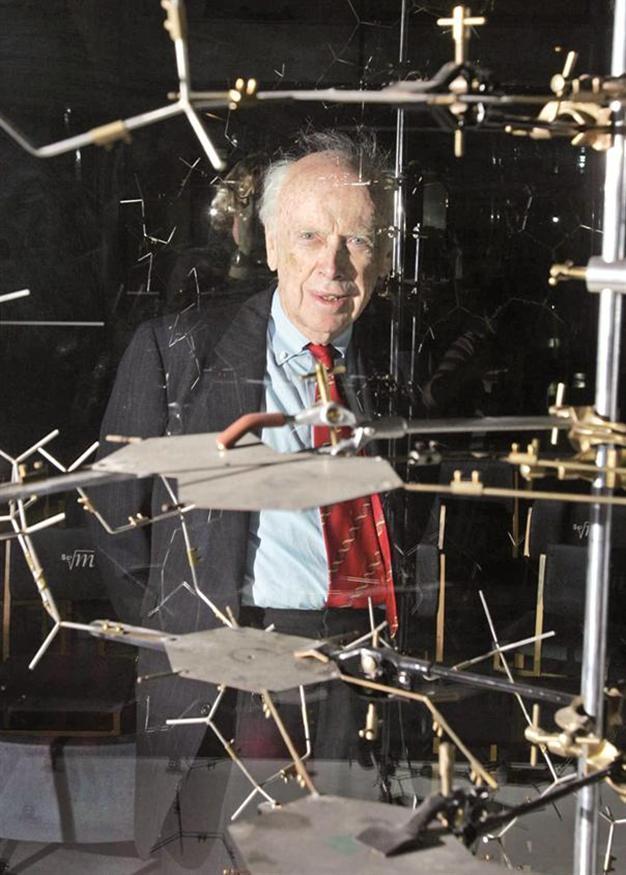Reverse extinction might be possible
PARIS - Agence France-Presse

US geneticist James Dewey Watson discovered the DNA structure. AFP photo
Woolly mammoths stomp through the Siberian tundra as the giant moa strides the forest floor of New Zealand and Tasmania’s dog-like “tigers” stalk their prey under the cover of night. It is a scenario that some biogeneticists see as plausible in our own lifetimes: The resurrection of species driven to extinction, sometimes thousands of years ago.April 25 will be 60 years since Francis Crick and James Watson published their paper unveiling the structure of DNA, the double-helix genetic code for life.
Today, some experts believe that by harnessing this breakthrough knowledge, the first extinct species could be revived within years.
From preserved tissues
They could be cloned from genetic material teased from preserved tissues, with the reprogrammed egg implanted in a cousin species.
In 2009, researchers announced they had cloned a bucardo, using DNA taken from the last member of this family of Spanish mountain goats before she died in 2000. This was the first cloned animal born from an extinct subspecies, but the kid, borne by a domestic goat, died within 10 minutes from a lung abnormality.
Australian teams are also working on reviving the Tasmanian tiger with DNA obtained from an ethanol-preserved pup of the dog-like, marsupial predator that died out in the 1930s. In Japan, geneticists said in 2011 they planned to use DNA from frozen carcasses to resurrect within six years the woolly mammoth which died out during the last Ice Age.
Scientists believe reconstruction would be feasible for most animals for which DNA has survived, possibly going back 200,000 years, a limit that would exclude a “Jurassic Park”-like revival of the dinosaurs.
















